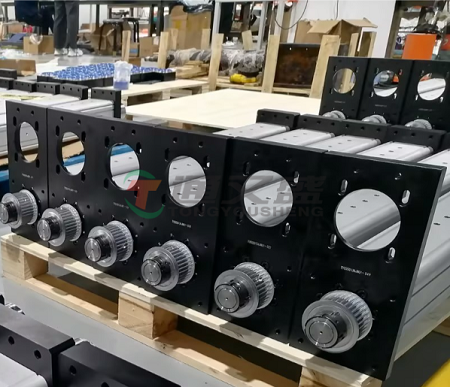Electric cylinders, with their precise motion control, high load capacity, fast response, energy efficiency, and low maintenance costs, have become a core driving component in modern industrial automation.
Whether used in automated production lines, precision machining, robotic applications, or medical devices, electric cylinders provide efficient and stable solutions.
Electric cylinders offer flexible control options, allowing adjustments via various control systems. Traditional electric cylinders are typically operated through control systems based on PLCs (Programmable Logic Controllers) or embedded controllers, where users can adjust input signals to modify the motion patterns.
More advanced systems support integration with industrial automation equipment (such as robots, CNC systems), enabling precise multi-axis coordinated control.
This flexibility not only broadens the applicability of electric cylinders but also allows users to customize adjustments based on specific application requirements.

Compared to traditional hydraulic and pneumatic systems, electric cylinders have significant energy efficiency advantages. Hydraulic systems require continuous consumption of hydraulic fluid, while pneumatic systems rely on compressed air, both of which result in energy waste.
Electric cylinders, on the other hand, use servo motors and other control components to dynamically adjust energy output based on actual load and working conditions, reducing unnecessary energy consumption.
Moreover, electric cylinders operate without oil leakage and noise issues, making them more environmentally friendly compared to hydraulic systems, in line with modern industrial green production standards.
Another important advantage of electric cylinders is their low maintenance cost.
Due to their simple operating principle and the fact that they do not require frequent replacement of fluid, seals, and piping like hydraulic systems, electric cylinders are easier to maintain.
Additionally, the smooth operation of electric cylinders reduces internal wear and tear, extending the service life of the equipment and lowering long-term maintenance expenses.